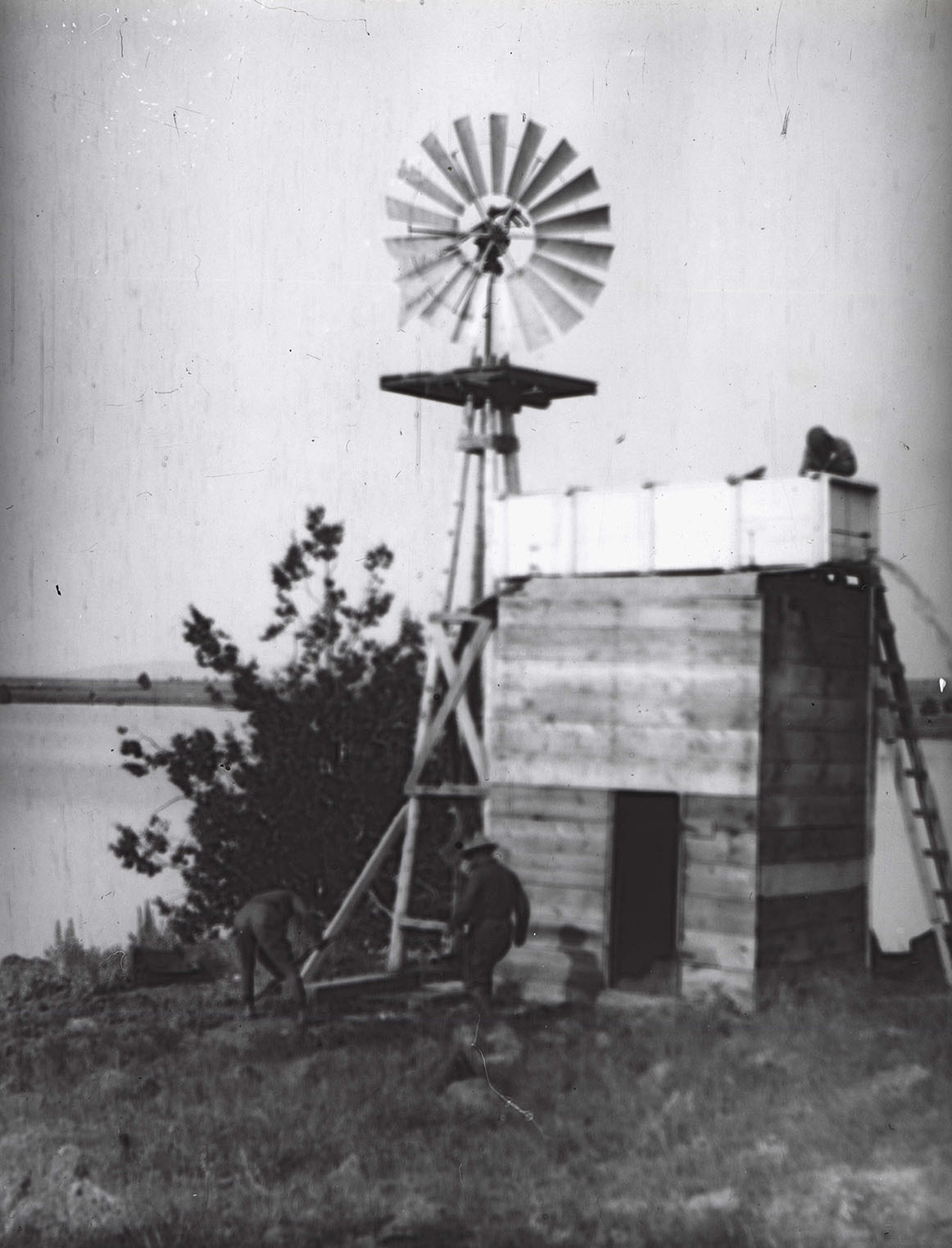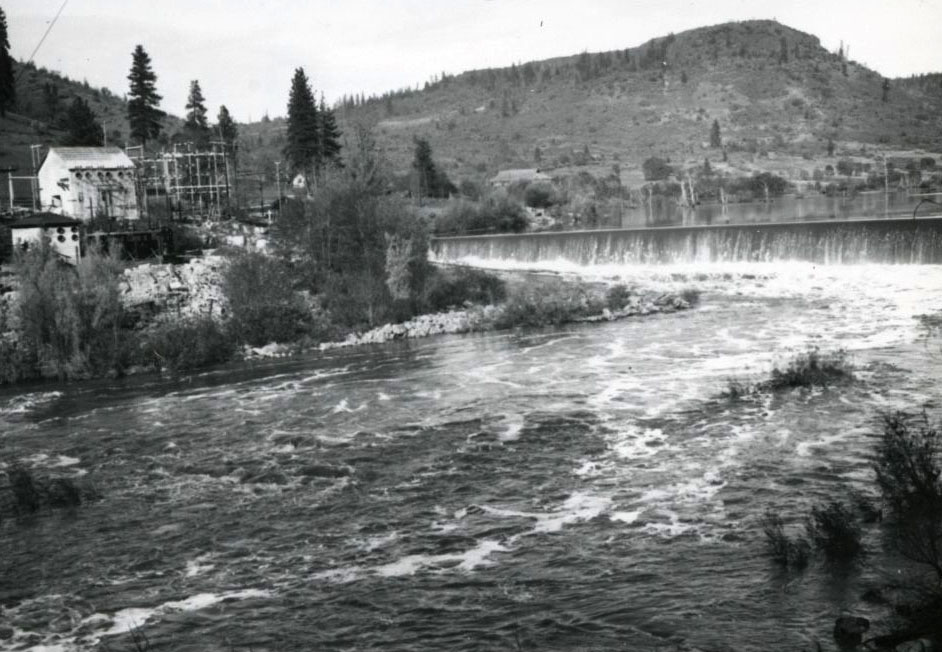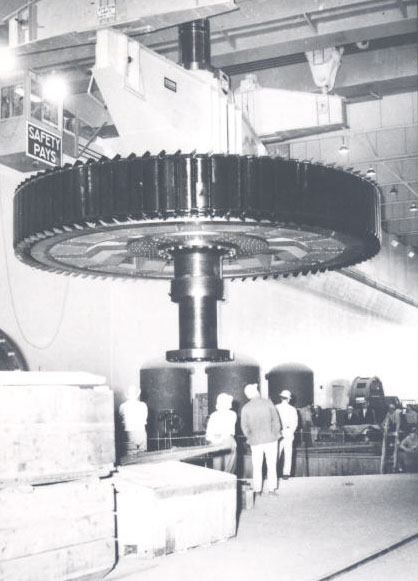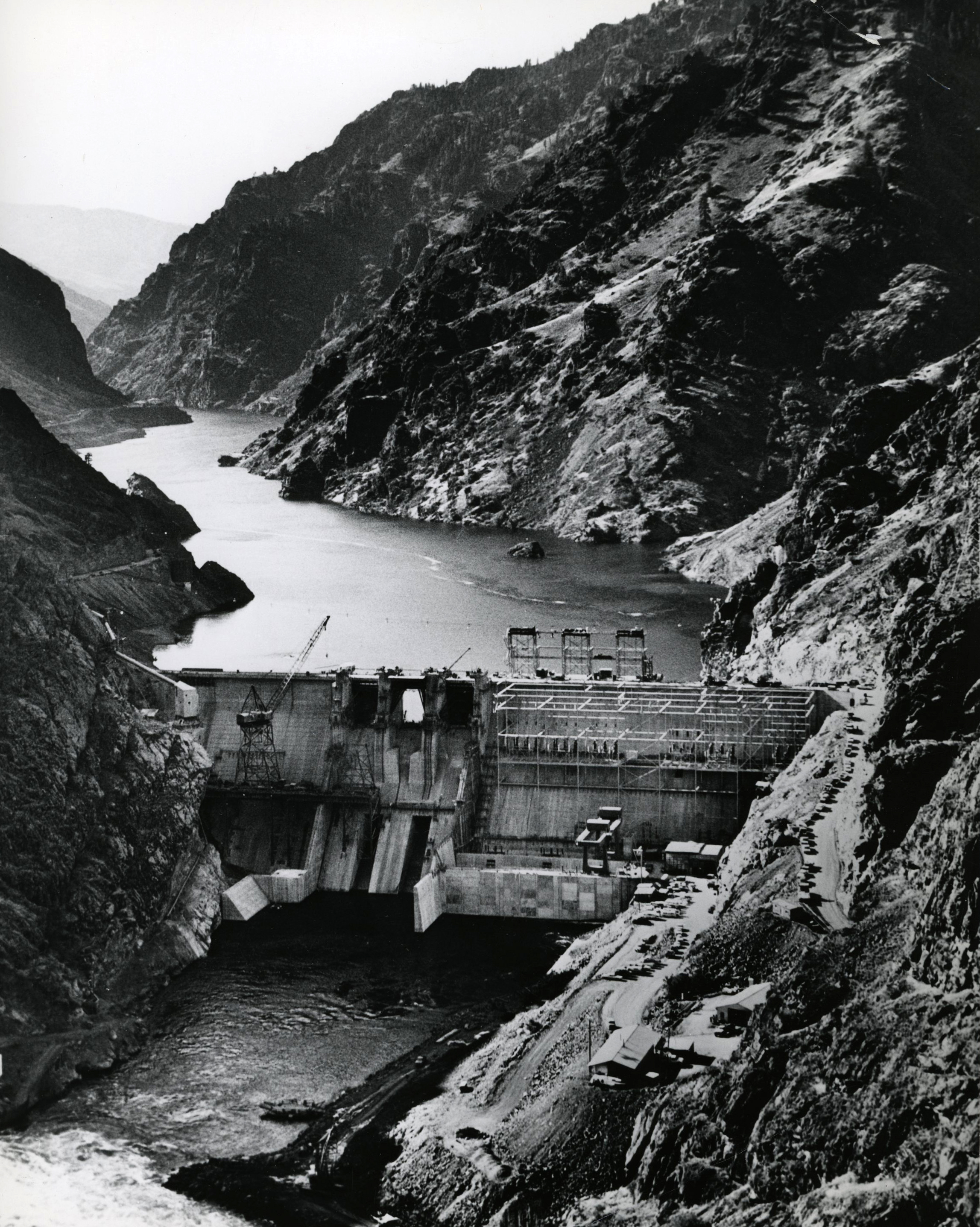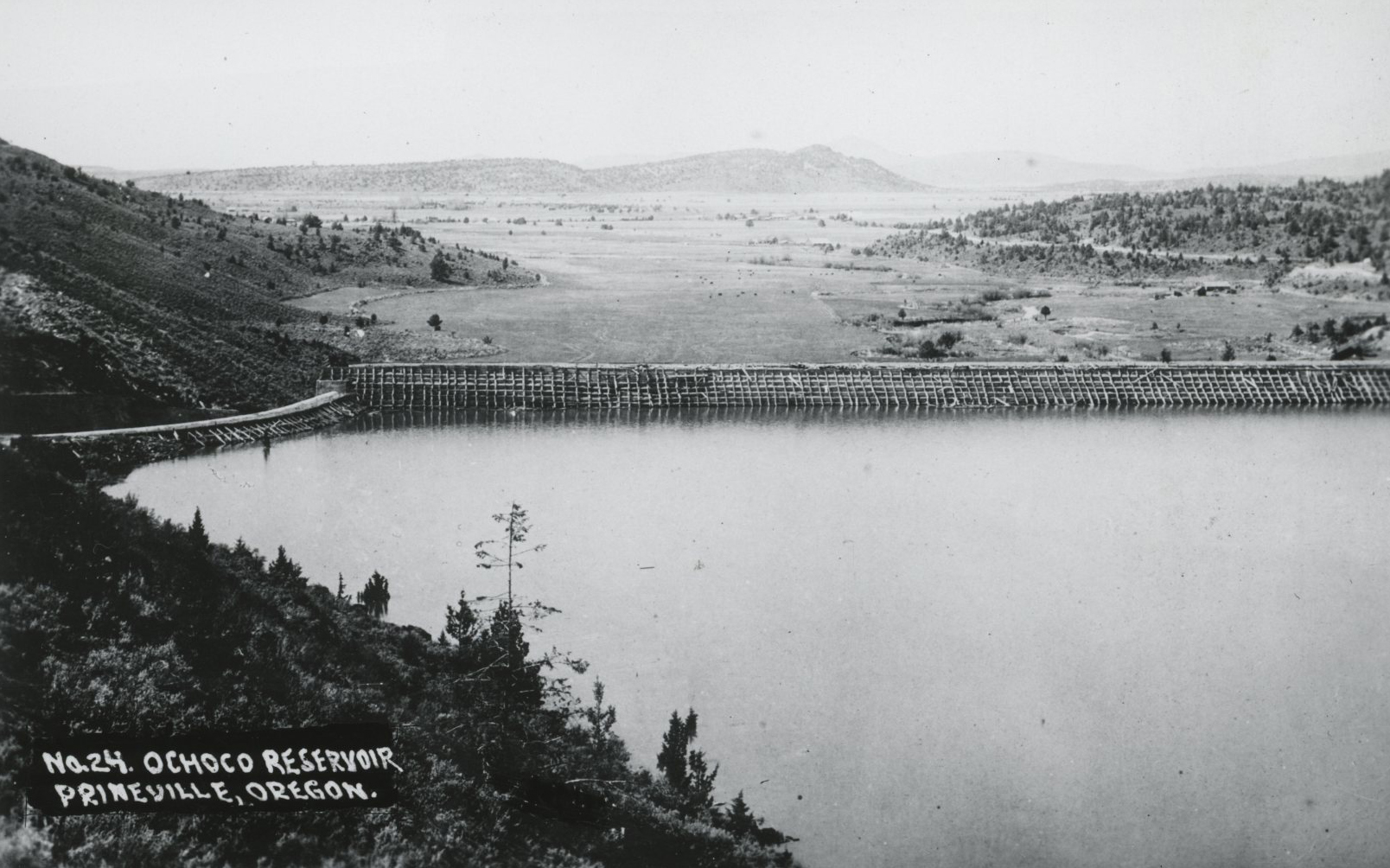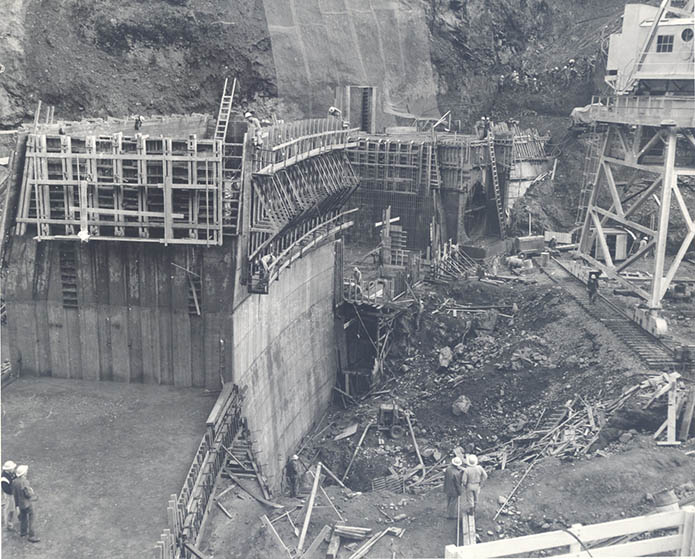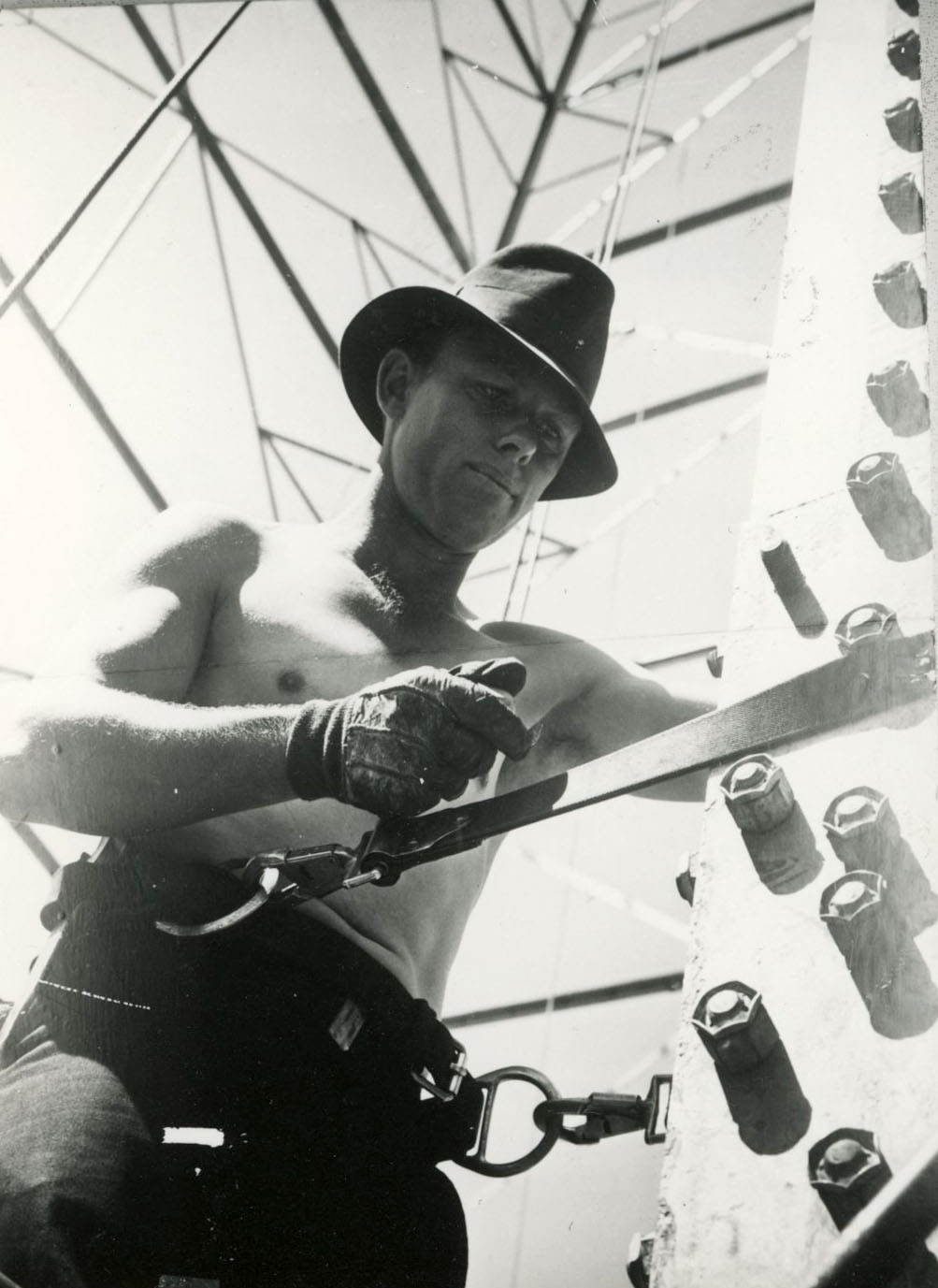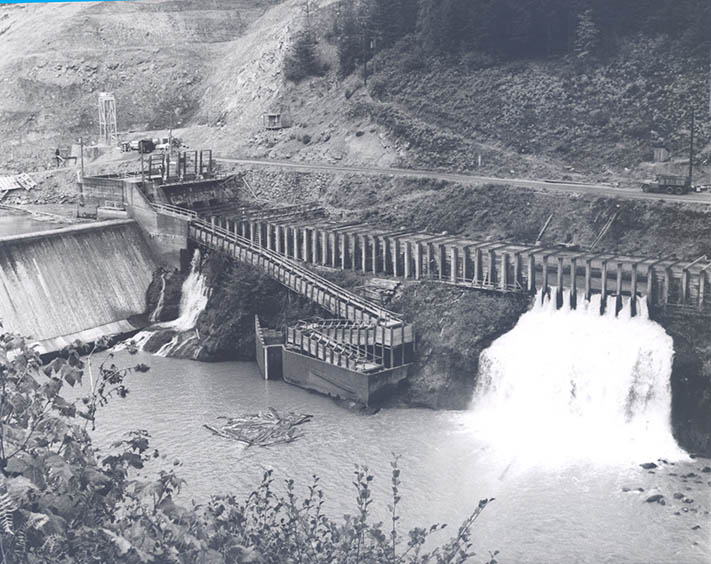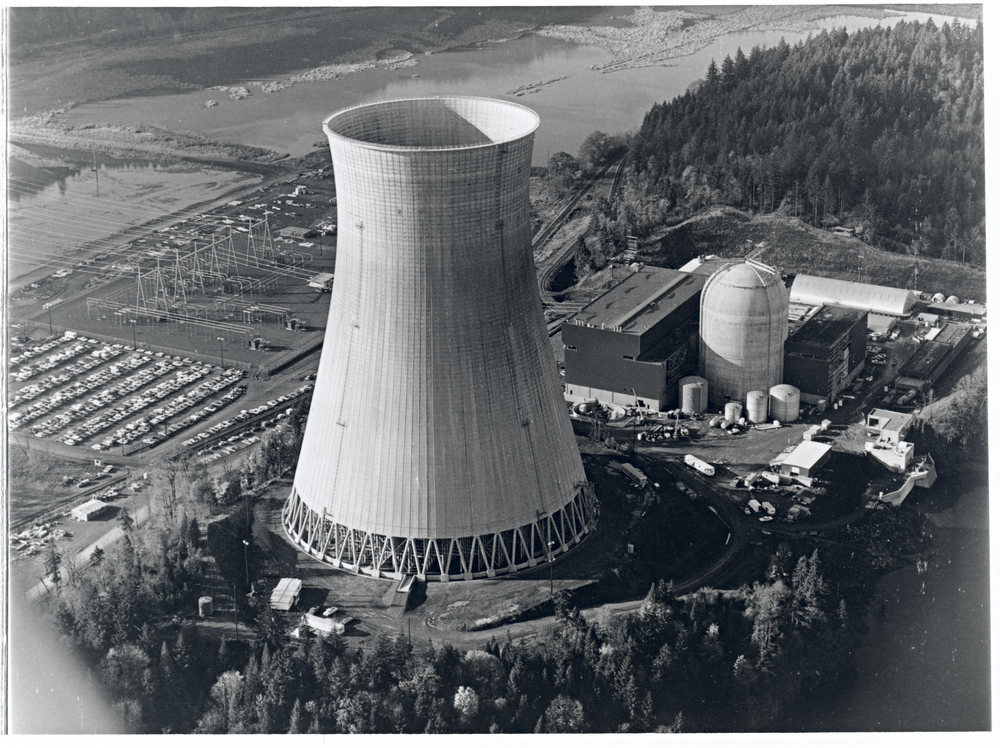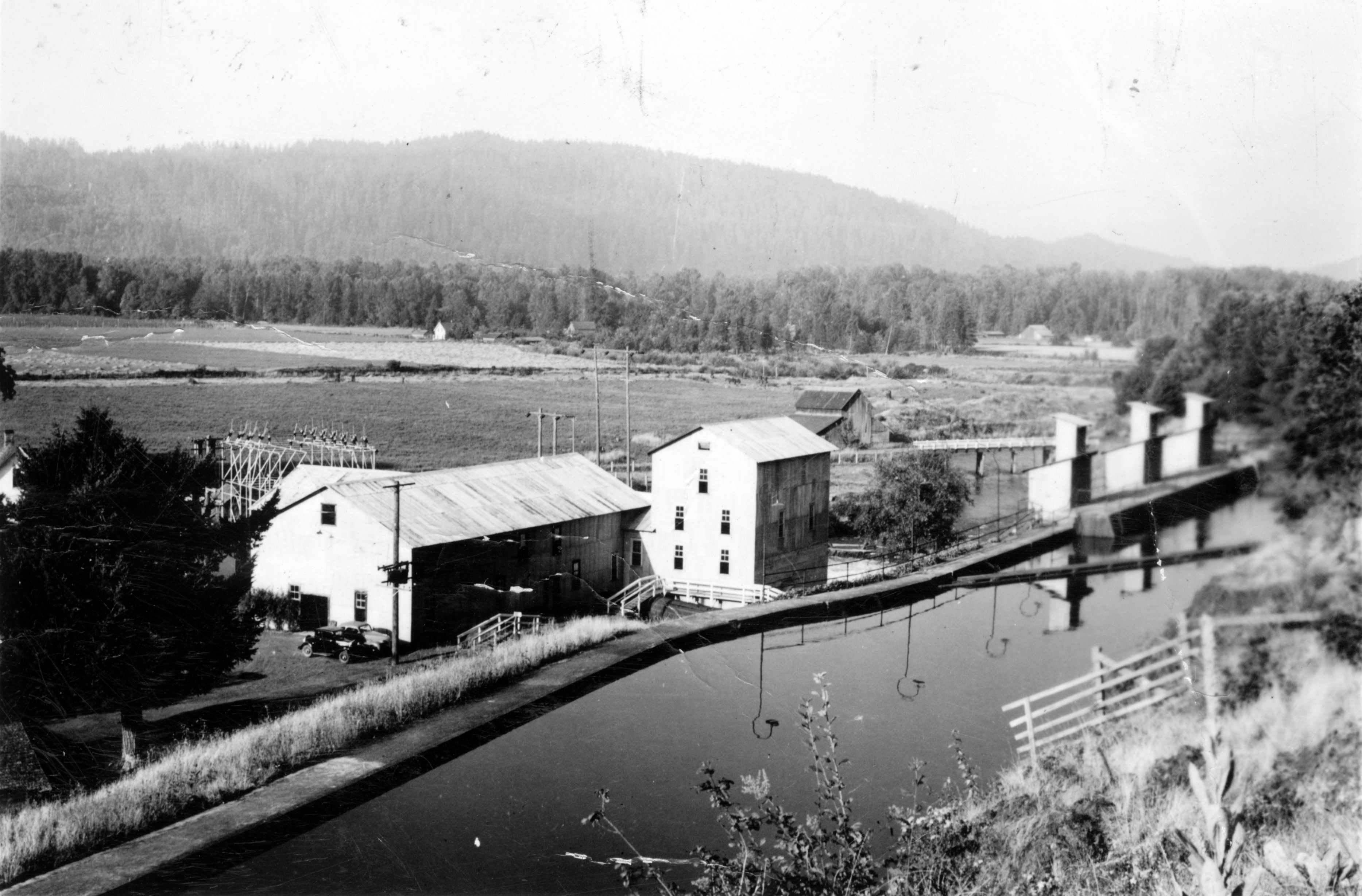Unlike in other parts of the country, hydropower is the largest source of electricity in Oregon and the Northwest. As a result, the region has a running head start on reducing greenhouse gas emissions from the electricity sector of the economy to help meet clean-energy policy goals in response to the climate crisis. In short, the Northwest relies less on thermal generation to produce electricity—less coal, less natural gas—and increasingly more on generation that does not produce emissions.
How much less? According to statistics compiled by the U.S. Energy Information Administration for 2020, the most recent year these data are available, Oregon’s utility-scale electricity generation from all types totaled 63,625,000 million megawatt-hours (this does not account for customer generation like rooftop solar panels, a small but growing source of power in the state and the nation). Total utility-scale generation in the United States was 4,007,135,000 megawatt-hours, so Oregon’s generation was 1.58 percent of the total.
The state also relied less on generation from coal and natural gas than other states, particularly those on the East Coast. Oregon’s generation from coal-fired power plants in 2020, for example, totaled 6,773,000 megawatt-hours; Kentucky, a big coal-producing state, totaled 43,638,000 megawatt-hours—six times as much. (Oregon’s population in 2020 was 4.2 million; Kentucky’s was 4.5 million.) In 2020, the Oregon Department of Energy reported that 39 percent of the state’s electricity came from hydropower, 26.4 percent from coal, and 21.5 percent from natural gas. These figures represent electricity generated in the state plus imports from outside the state, as electricity generated in one state is sent into the western grid and does not necessarily stay in the state where it is generated.
Thanks to hydropower generated at dams on the Columbia River and its major tributaries, the Northwest is blessed with an abundance of emission-free power. Hydropower comprises 48 percent of the maximum amount of energy that all Northwest power plants are capable of producing in an average year. Most of that hydropower is generated by the Federal Columbia River Power System. The system comprises twenty-nine hydropower dams in the Columbia River Basin and two in the Rogue River Basin in southwestern Oregon, plus one nonfederal nuclear power plant, the Columbia Generating Station on the Columbia River near Richland, Washington. The federal dams are owned by either the U.S. Army Corps of Engineers or the U.S. Bureau of Reclamation, and the power is sold by the Bonneville Power Administration. According to BPA, the annual average federal hydropower generation in 2021 was 11,564 average megawatts, or 71 percent of all the hydropower generated that year in the Northwest.
Oregon’s Energy History
Hydropower will continue to dominate the regional power supply, but the mix of generating resources is changing rapidly. Aging and inefficient thermal power plants in the West, mostly coal plants but also natural gas, are being retired as more noncombustion, renewable resources—wind, solar, geothermal—are added to the power supply. In just a few years beyond the early 2020s, the West Coast power supply will be dominated by renewables as part of the effort to comply with clean-energy policies by reducing power plant emissions.
This evolving mix of resources has historical precedent. Falling water and fire—specifically hydropower and heat—were Oregon’s first energy sources. Falling water powered the first sawmill on the Pacific Coast, built by the Hudson’s Bay Company on a tributary creek to the Columbia near Fort Vancouver in 1828. The first flourmill, built at Mulino in 1851, also used the power of falling water. Harnessing the power of falling water to do work foreshadowed the future of many rivers in the Northwest, particularly the Columbia, where the work of engineering the river to provide navigation, flood control, and hydropower—particularly hydropower—would get underway in less than half a century. The Columbia would become, for Oregon and the Northwest, “the vehicle for modernity,” in the words of historian William L. Lang, and the great hydroelectric projects on the river that would power homes, businesses, and industries would help “dramatically energize” Oregon and the Northwest.
The origins of Oregon’s energy history were humble in comparison to the hydroelectric projects, thermal plants, windmills, and solar farms that were to come. The technology of burning (carbonizing) coal to extract natural gas was first commercialized in Great Britain in the late 1700s. Coal gas was used largely for lighting until 1855, when Robert Bunsen invented a burner—the Bunsen burner—that could be used for cooking and heating. The new technology spread, and in January 1859 the Oregon territorial legislature issued a franchise for a “gas manufactory” to Portlanders Henry Dodge Green and H. C. Leonard. The entrepreneurs built a coal gasification plant on the west bank of the Willamette River in 1859. By the following year, the Portland Gas Light Company, known as GASCO, was providing gas lighting to Portland and its three thousand residents (GASCO was the forerunner of Northwest Natural Gas Company, today named Northwest Natural). The company changed its name in 1892 and again 1910, the second time to the Portland Gas and Coke Company, which by then was producing gas and coke briquettes from heavy oil.
Portland experienced electricity for the first time in 1880, just a year after Thomas Edison invented the electric lightbulb. The SS Columbia docked on the Willamette River that year, and the ship's six arc lights, powered by the ship’s coal-fired engines, were attached to wires that ran from the ship to the front of the Clarendon Hotel on Front Street. “The electric light used in the vessel’s rigging [was] suspended over the center of First Street,” the September 4, 1880, Morning Oregonian reported. “The powerful rays lighted up the whole neighborhood to the brightness of day. Thousands visited the light and the vessel.”
Once Edison perfected the technology for a bulb with a softer light that would glow for more than 150 hours, electric lights became a sensation in Oregon and across the country. The new technology was soon competing with coal-gas lamps, which produced less light and had been the mainstay of commercial and residential lighting through much of the nineteenth century.
In 1888, the Willamette Falls Electric Company, forerunner of the Portland General Electric Company, built a plant at Willamette Falls using the power of falling water to operate a generator. On June 3, 1889, the company transmitted direct-current (DC) electricity fourteen miles to power arc street lights in downtown Portland, the first long-distance transmission of DC power in the nation. A year later, alternating current (AC) was transmitted on the same line.
The harsh brilliance of arc lights would not do for home lighting, however, and as news of Edison’s softer-light incandescent bulb spread, interest in electric lights grew exponentially. Electricity was the key to developing and expanding public utilities, and municipal electric and water utilities began to proliferate in Oregon: McMinnville in 1889, Forest Grove in 1895, and Eugene in 1908. Pacific Power and Light Company was incorporated in 1910 with several small power companies, including Astoria Electric and electricity providers in Pendleton and The Dalles and in Yakima, Pasco, and Walla Walla, Washington. Some of those systems relied on hydropower, while others relied on steam power produced from burning coal, oil, or wood to spin turbines to generate power.
By 1930, holding companies controlled electricity services across much of the United States. Most of western Oregon was served by Standard Gas and Electric, based in Chicago and one of the largest holding companies in the country. Except for a handful of communities where private companies built small systems, most of eastern Oregon did not have electricity at this time. Holding companies were unregulated, but their operating companies, which generated and distributed electricity in cities across the nation, including in Oregon, were regulated by the states. As holding companies demanded more and more money from their operating companies, more and more money had to be collected from consumers.
The Advent of Public Power
The electricity for many of these localized systems came from hydropower dams near the nation’s cities, while other systems relied on steam-driven generators powered by the combustion of coal or wood. Most of these systems were not interconnected, and holding companies saw the opportunity to take over and connect as many as possible.
The need for financing—and the raging turf battles among holding companies to buy the small municipal systems—led to wild speculation in utility stocks and contributed to the great stock market crash of 1929. The crash and fallout in the electricity industry led voters to approve new laws, promoted by Grange organizations across the country, to give counties the same rights as cities to own and operate electricity systems.
With holding companies seen as soulless profiteers, sentiment grew for public ownership of power generation and distribution beyond small municipal systems. Anger over the cost of power and who provided it was at the heart of the debate between private power interests and those who favored public ownership. In 1930, Oregon voters adopted a constitutional amendment authorizing the drafting of a People’s Utility District law, which was approved in 1931. The first public utility district in Oregon, in Tillamook County, was approved by voters in 1933.
Public power had an ally in President Franklin D. Roosevelt, who described utility holding companies as “financial monstrosities” in a 1932 campaign speech in Portland. The next great hydroelectric development would be on the Columbia River, he declared, and public power generated by Columbia River dams owned and operated by the federal government would “provide a yardstick to prevent extortion against the public and encourage wider use of electric power.”
Once inaugurated in 1933, Roosevelt personally authorized construction of Grand Coulee Dam on the Columbia, at river mile 596 in Washington. The president also authorized the construction of Bonneville Dam, 450 miles downstream. “Franklin Roosevelt and his New Deal started many projects through executive order during the first months of the New Deal,” historian Paul Pitzer wrote. “Roosevelt side-stepped Congress by providing the money out of the general fund. This left Congress to pay for them or abandon them, still unfinished, at some later date.…Roosevelt began Grand Coulee Dam under what amounted to presidential fiat.” He did the same for Bonneville.
In 1937, with Oregon Senator Charles McNary leading the fight for passage, Congress approved the Bonneville Project Act, creating a temporary federal agency based in Portland to market power from Bonneville and Grand Coulee. That agency became the Bonneville Power Administration, a power-marketing authority in the U.S. Department of Energy.
Bonneville Dam was completed on the lower river in 1938 and Grand Coulee in 1941. With federal power available and with authority under the state constitution, three more People’s Utility Districts were formed in Oregon during the 1940s: Central Lincoln PUD, Clatskanie PUD, and Northern Wasco County PUD. Two more were formed during the 1980s in response to increasingly high electricity rates from the existing investor-owned utilities—Columbia River PUD and Emerald PUD.
In 1936, President Roosevelt signed the Rural Electrification Act. The act created the Rural Electrification Administration, which provided federal loans for the installation of electrical distribution systems to serve isolated rural areas throughout the country. This funding was channeled through cooperative electric power companies that formed in response to the act, including in Oregon and the Northwest. There are eighteen electric co-ops in Oregon today; the most recent, the Oregon Trail Electric Cooperative, formed in northeastern Oregon in 1987.
As transmission lines were built, power from Grand Coulee and Bonneville Dams began to flow to cities and, importantly, to rural areas. In 1937, 44 percent of Oregon farms had electricity. By 1940, nearly 60 percent had power, and within two more years the number had increased to 74 percent. In 1940, a campaign to take over the Portland Electric Power Company (PEPCO) and create a People’s Utility District failed even though PEPCO had filed for federal bankruptcy protection in 1939. PEPCO was the successor company to the Willamette Falls Electric Company, which had transmitted electricity from its Willamette Falls power plant to downtown Portland in 1889. PEPCO reorganized as Portland General Electric Company in 1948. Four days before the May 17, 1940, PUD vote, the Oregon Journal captured the anti-PUD sentiment in Portland when it editorialized that “PUD laws were passed primarily for use in rural areas.” A proposal to create a municipal utility in Portland failed in 1941.
PEPCO emerged from bankruptcy in January 1948 following the filing of a reorganization plan in U.S. District Court. In 2022, Portland General Electric distributed electricity mainly in the Portland area to nine hundred thousand customers and split its Portland service area with PacifiCorp, with PGE mainly serving consumers west of the Willamette River and PacifiCorp serving those to the east. PacifiCorp, which also serves communities elsewhere in Oregon and the Northwest, has been sold several times and since 2006 has been owned by Berkshire Hathaway Energy.
Not all of the takeovers resulted in public utilities. In southern Oregon, for example, it was just the opposite. Beginning as long ago as 1882, small electric companies were established in the southern and southwestern parts of the state—on the Link River near Klamath Falls, for example, and at Grants Pass, Medford, and small towns along the Rogue River. The California–Oregon Power Company (COPCO) was established in Medford in 1882 and began buying those small systems, which were not interconnected. In 1902, COPCO was bought by the Siskiyou Electric Power Company, which was connected to Pacific Gas & Electric Company in California. Siskiyou eventually was purchased by Pacific Power.
Nuclear power also has a history in Oregon. In 1973, the Trojan Nuclear Power Plant began generating electricity, thirty miles north of Portland on the Oregon side of the Columbia River. Trojan had fourteen owners and was operated by PGE, the majority owner. The public voted three times to close the plant, but those efforts failed. High maintenance costs eventually led PGE to decommission the plant in 1993, twenty years before its operating license expired.
The anti-nuclear movement in Oregon was strong. One year after the Three Mile Island accident in March 1979, the worst nuclear accident in the history of nuclear power in the United States, Oregon voters approved a 1980 initiative requiring voter approval of any future nuclear projects in the state. PGE’s plans to build two nuclear plants at Pebble Springs, near Arlington in eastern Oregon, were canceled in 1982 due to cost escalation, declining demand for power, and the prospect of losing if the projects were put on the ballot for voters’ approval.
Responding to the Climate Crisis
For decades, Oregon relied on power plants that burned fossil fuels—coal primarily, but also oil and wood waste from sawmills. That has been changing in the twenty-first century as the state and the nation confront the challenges of reducing greenhouse gas emissions in response to the crisis of climate change. Aging and inefficient coal-fired power plants are either being retired or reengineered to burn natural gas, which produces fewer emissions than coal.
These changes are happening as much for economic as for climate-change reasons. While it is extremely expensive to retrofit a coal-fired power plant to produce cleaner emissions, the owners of those plants face the reality of competing in a wholesale marketplace that is increasingly dominated by rapidly falling power prices thanks to the increase in wind and solar power, both of which are less expensive to generate than power from thermal plants. PGE’s Boardman coal-fired plant is a good example.
The plant, eleven miles southwest of Boardman, began operating in 1980 and was shut down in 2020. It was a major source of air pollution, emitting four million tons of greenhouse gases a year and 25,500 tons of other pollutants, primarily sulfur dioxide and nitrogen oxides, as measured in 2020. Pollution from the coal plant created haze and acid rain. On September 15, 2022, the plant’s 656-foot stack and 19-story boiler building were demolished. A power plant that burns natural gas and produces fewer carbon emissions is being built at the site.
In March 2020, Oregon Governor Kate Brown issued an executive order calling for a significant reduction in greenhouse gas emissions from electricity-generating plants. In 2021, the Oregon legislature adopted House Bill 2021, which calls for reducing greenhouse gas emissions associated with electricity sold to Oregon consumers to an amount commensurate with 100 percent of baseline-level emissions by 2040. In the law, “baseline emissions” are defined as the average annual emissions for 2010, 2011, and 2012.
Climate change impacts and clean-energy requirements affect more than electricity generation at thermal power plants. Hydropower will be impacted as climate change affects precipitation patterns—hotter, drier summers and warmer, wetter winters. Mountain snowpack is the fuel for hydropower generation in the summer, and less snowpack and earlier annual runoff will affect how much hydropower can be generated, and when.
The impacts of climate change and the push for more renewable energy in the state is at the heart of legislation adopted in 2022 by the Oregon legislature: a $100 million Climate Resilience Budget, which includes investments in the Emergency Heat Relief Act; drought relief efforts; improved home energy efficiency through the expansion of the Healthy Homes Repair Fund; additional funding for the Oregon Solar + Storage Program, established in 2019; key investments in emission-reduction efforts in the transportation sector, including a new focus on medium- and heavy-duty trucks; establishment of the Resilient, Efficient Buildings Task Force to reduce emissions from homes and buildings; and planning for seismic events and the impacts that a major earthquake could have on critical infrastructure at oil and liquid fuel terminals in Portland.
Geothermal power is another type of electricity generation with potential in Oregon. In geothermal systems, pipes are sunk deep into the earth in areas of known geothermal heat. One pipe functions as a well to draw hot water or steam to the surface, and the other pipe injects the water or steam back into the ground. Heat from the water or steam drives electricity generators. Unlike solar or wind power, geothermal power is constant, and hot water from geothermal plants can be used to heat buildings and greenhouses.
Geothermal is a small generating resource in Oregon and the Northwest, supplying 0.09 percent of the state’s electricity supply and 32.3 average megawatts of the total 33,828 average megawatts online throughout the Northwest in 2020. Two geothermal plants were built at the Oregon Institute of Technology in Klamath Falls, one in 2010 that generates 280 kilowatts, and one in 2012, with a capacity of 1.75 megawatts. Combined, they produce enough electricity in a year to power 25 average homes. Two other geothermal plants operate in the state, one near Vale and the other near Lakeview, and a test facility has been built at the Newberry Crater south of Bend. But geothermal plants are expensive, about four times the cost of a natural gas-fired power plant, for example, and twice as expensive as utility-scale solar.
Energy researchers at Oregon State University are also studying the potential for what the Oregon Department of Energy calls marine energy—using ocean tides and waves off the Pacific Coast to generate electricity. With over forty million dollars in federal grants, OSU researchers established two test sites off Newport and Waldport as part of the Pacific Marine Energy Center and are developing a utility-scale, grid-connected, marine-energy test site.
Renewable energy can be produced in a number of ways, some more reliable than others. For example, the constant motion of waves and tides and geothermal heat can provide a near-constant baseload of power, but other types are characterized by variable output—solar when it is light, for example, wind when the wind blows—and are unable to provide constant generation 24 hours a day, 365 days of the year. The power system needs to provide reliable, adequate power all day every day without interruption.
But there is a solution to variability: energy storage devices, such as large batteries. Energy storage technology is the focus of intense research today, as more and more solar and wind power is added to the power supply. Utility-scale battery installations are planned around the country, and some already have been built. In May 2023, for example, Portland General Electric Company announced plans to build a combined total of 400-megawatts of battery storage in two installations, one in north Portland the other in Troutdale, east of Portland. It will be the second-largest battery installation in the country (the largest is near Monterey, California). That installation currently can dispatch up to 400 megawatts, and the owner plans to expand the plant to 750 megawatts by mid-2023. The two locations of PGE’s storage installation are predicted to be operational by 2026. Many new wind and solar installations are being built side-by-side with utility-scale energy storage like these installations to dispatch power to the grid when the wind and solar plants are not generating. In this way, solar and wind power can be “firmed” for the power supply.
Wood, coal, gas, and flowing water powered early electricity generators in Oregon. In the future, less of the state’s energy will come from thermal combustion turbines and more will come from renewable sources in response to the effects of climate change. What was old will be new again, as most of Oregon’s power will be generated from the heat of the sun and the heat of the Earth, augmented with power from the wind and the ocean.
-
![]()
Windmill on the edge of a lake, c.1912.
Courtesy Oregon State University Libraries, P202_series07_box11_0035 -
![]()
Wind turbines in eastern Oregon.
Courtesy John Womack -
![]()
Bull Run, Little Sandy Dam, power plant, c.1910.
Oregon Historical Society Research Library, OrgLot151_PGE15-169 -
![]()
Coal mine, Smith-Powers Logging Co., Coos County, 1911.
Courtesy Oregon State University Libraries -
![]()
Coal pickers.
Courtesy Oregon State University Libraries -
![]()
Portland Gas & Coke Co..
Courtesy Oregon State University Libraries -
![]()
Portland Gas & Coke Co. factories,.
Courtesy Oregon State University Libraries -
![]()
Portland Gas & Coke Building.
Courtesy University of Oregon Libraries -
![]()
Coal burner in a residential basement, 1923.
Oregon Historical Society Research Library, Oregon Journal, 371N0778 -
![]()
Gold Ray Dam and Substation, Rogue River, 1924.
Courtesy Oregon Hist. Soc. Research Lib., Lot456-8
-
![Gold Ray Dam powerhouse interior.]()
Gold Ray Dam, pwr house interior.
Gold Ray Dam powerhouse interior. Southern Oreg. Hist. Soc., SOHS01i_16659
-
![]()
Bonneville Dam, 1936.
Courtesy Oregon Hist. Soc. Research Lib., 002652
-
![Bonneville Dam, April 29, 1938.]()
Bonneville Dam 2, Apr 1938.
Bonneville Dam, April 29, 1938. Oreg. State Univ. Archives, Wasco County Pioneer Assoc., WCPA 186B-2
-
![]()
Electric transformer, 1949.
Oregon Historical Society Research Library, OrgLot151_PGE49-73 -
![]()
PGE transmission tower, 1949.
Oregon Historical Society Research Library, OrgLot151_PGE49-308 -
![]()
Portland General Electric utility truck, 1950.
Oregon Historical Society Research Library, OrgLot151_PGE50-676 -
![The Dalles Dam, 435-ton generator, 1957]()
The Dalles Dam, 435-ton generator, 1957.
The Dalles Dam, 435-ton generator, 1957 Courtesy Oreg. Hist. Soc. Research Lib., neg. no.015345
-
![]()
Willamette Falls generator, 1961.
Oregon Historical Society Research Library, OrgLot151_PGE61-320-1 -
![]()
Hells Canyon Dam on the Snake River, 1967.
Courtesy Oregon Hist. Soc. Research Lib., Orhi93275
-
![]()
Ochoco Dam.
Courtesy Oregon Hist. Soc. Research Lib., ba014894
-
![North Fork Dam and Powerhouse]()
North Fork Dam and Powerhouse.
North Fork Dam and Powerhouse Courtesy Oreg. Hist. Soc. Research Lib., Portland General Electric Collection
-
![North Fork Dam and Powerhouse, 1957]()
North Fork Dam and Powerhouse, 1957.
North Fork Dam and Powerhouse, 1957 Courtesy Oreg. Hist. Soc. Research Lib., Portland General Electric Collection
-
![]()
Solar panels, Oregon State University, 1979.
Courtesy Oregon State University Libraries -
![]()
Windmill for energy, 1979.
Courtesy Oregon State University Libraries -
![]()
Solar panels on the Erb Memorial Union building, University of Oregon, 2008.
Courtesy University of Oregon Libraries -
![]()
Geothermal power plant.
Courtesy Oregon Department of Energy
Related Entries
-
![Bonneville Dam]()
Bonneville Dam
The U.S. Army Corps of Engineers built and operated Bonneville Lock and…
-
![Bonneville Power Administration]()
Bonneville Power Administration
In 1937, the impending completion of Bonneville Dam (1938) and progress…
-
![Climate Change in Oregon]()
Climate Change in Oregon
Within a few hundred miles in Oregon, you can see snowy volcanoes, parc…
-
![Energy Trust of Oregon]()
Energy Trust of Oregon
Energy Trust of Oregon was established in 2002 as a nonprofit organizat…
-
![Faraday Dam and Powerhouse]()
Faraday Dam and Powerhouse
The Faraday Powerhouse, located in Estacada on the Clackamas River, pro…
-
![North Fork Dam and Powerhouse]()
North Fork Dam and Powerhouse
The North Fork Dam and Powerhouse, owned and operated by Portland Gener…
-
![Northwest Power Act (1980)]()
Northwest Power Act (1980)
In 1980, after four years of deliberation and several attempts, Congres…
-
![Pacific Northwest–Southwest Intertie]()
Pacific Northwest–Southwest Intertie
No area of the West is isolated from the western electric power supply,…
-
![Portland Railway Light and Power]()
Portland Railway Light and Power
Portland Railway Light & Power (PRLP) was created in 1906 through the c…
-
![The Dalles Dam]()
The Dalles Dam
The United States Army Corps of Engineers constructed The Dalles Dam be…
-
![Trojan Nuclear Power Plant]()
Trojan Nuclear Power Plant
The Trojan Nuclear Power Plant, located in Columbia County about twelve…
-
![Walterville Canal & Powerhouse]()
Walterville Canal & Powerhouse
The Walterville Canal and Powerhouse is owned and operated by the Eugen…
Map This on the Oregon History WayFinder
The Oregon History Wayfinder is an interactive map that identifies significant places, people, and events in Oregon history.
Further Reading
Tollefson, Gene. BPA & The Struggle For Power At Cost. Portland, Ore.: Bonneville Power Administration, 1987.
Pope, Daniel. Nuclear Implosions: The Rise and Fall of the Washington Public Power Supply System. Cambridge University Press, 2008.
Lang, William L. "What Has Happened to the Columbia? A Great River's Fate in the Twentieth Century." In Great River of the West: Essays on the Columbia River, edited by William L. Lang and Robert C. Carriker. Seattle: University of Washington Press, 1999.
"Existing and new/proposed power plants." Northwest Power and Conservation Council. Charts.
"Federal Columbia River Power System." U.S. Bureau of Reclamation, Columbia-Pacific Northwest Region.
"Electricity Mix in Oregon." Oregon Department of Energy. Charts.

